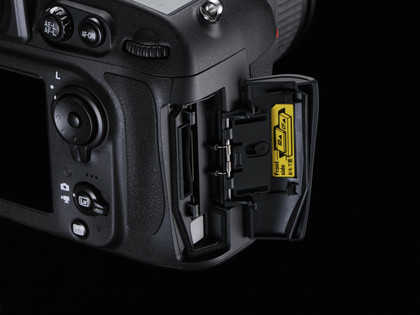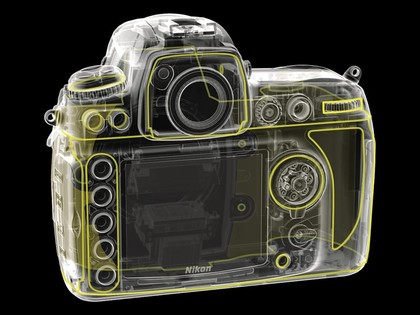Nikon D800 vs D700: time to bag a bargain?
Do you really need a D800?
Sensitivity
Further differences between the two models include an expanded ISO sensitivity range for the D800, with the addition of ISO 100 at the lower end of its native scale (as well as being expandable to include ISO 50 and ISO 25600).
The new camera retains the outstanding 51-point Phase Detect AF system featured in the D700, with all of the same AF modes on offer bar a newly-added Face Detection function. Driven by Nikon's trusty Multi-CAM 3500FX AF system, the module also pledges to deliver better low-light sensitivity, owing to the tweaks that have been made to the AF sensor's algorithms (as with the D4).
LCD screen
Supplementary alterations – like a slightly larger 3.2-inch (compared to the D700's 3-inch) screen and 100% viewfinder coverage (compared to the older model's 95%) – subtly enhance the D800 further, while the addition of Full HD movie capturing capability, complete with stereo sound and dual-format (FX and DX) file recording, is likely to be a bigger deciding factor if you're weighing up the merits of these two contenders.

The latter upgrade – among others - has necessitated a change to the D800's storage card compatibility, with newly-added support for SD, SDHC and SDXC memory cards, in addition to the CompactFlash slot that it shares with its predecessor.

With the exception of the slightly enlarged screen, subtly tweaked body shape and the addition of controls relating to bracketing and the new movie mode, there's little difference between the two models in terms of aesthetics and build quality.

Both cameras benefit from a robust, water and dust resistant magnesium alloy outer shell and sport the tried-and-tested comfortable grip and familiar styling that we've grown accustomed to seeing from Nikon's DSLRs.

The D700's metering system continues to put in a consistently accurate performance, with well-exposed images being produced under all manner of lighting conditions. The D800 promises to build on this further, benefitting from Nikon's newly-developed 91,000 pixel RGB metering sensor, which the camera's Advanced Scene Recognition System also utilises when Face Detection is enabled: features that we'll be putting through their paces once we get our hands on a full production sample.
Get daily insight, inspiration and deals in your inbox
Sign up for breaking news, reviews, opinion, top tech deals, and more.
Conclusion
It's clear that both the D700 and D800 – in spite of their age and price differences – have their individual merits as professional DSLRs.
The D800's biggest assets are evidently the more up-to-date technologies that have been developed in the time since the D700's release, making it more likely to appeal to photographers who like to combine stills shooting with movie-making and professionals who demand the very best low-light performance and highest-resolution images – assuming Nikon's claims are borne out in reality.
If your budget can't stretch to bag yourself the latest model however, the D700 still represents an outstanding professional tool that continues to deliver superb results and handling.
If you really must have the latest technology, the D800 certainly looks set to be among the best pro DSLRs that Nikon has produced to date; however if Full HD movies, the soft and hardware tweaks we've mentioned along with huge image files aren't at the top of your list of priorities, then the D700 is a worthy contender that'll make less of a dent in your bank balance to boot.